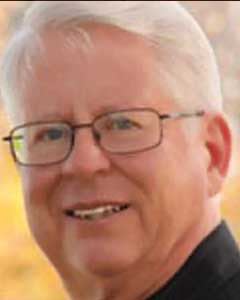This book may represent the first comparison of the Hebrew and Christian scriptures with the Qur’an that readers have ever encountered. That is reason enough to consider it.Noah’s Other Son: Bridging the Gap Between the Bible and the Qur’an by United Church of Canada minister Brian Arthur Brown is a trendsetter and a sign of future directions in scripture studies that are accessible to those theologically trained and people who are not.
The genesis of this book took place at the multicultural Lansing United Church in Toronto. In the wake of 9/11, this congregation and its ministers sponsored a series of epiphany sermons that compared the biblical stories of Adam and Eve, Cain and Abel, David and Goliath with their counterparts in the Qur’an – Aadam and Hawaa, Habeel and Qabeel, Dawoud and Galoot.[pullquote]The resulting many-layered study is structured around 25 familiar biblical figures who appear in the Islamic scriptures. It provides Jews and Christians with an opportunity to understand the place of the Qur’an in Muslim and world culture.
It is particularly helpful for those desiring to understand modern Islam through the medium of scripture studies. As Brown states frequently, this is not a book about comparative religion, but of comparative encounters with sacred scripture.
Reciprocally, Noah’s Other Son invites Muslims to appreciate the century-long collaboration of Jewish and Christian biblical scholars who have come to share the benefits of the technique of biblical criticism. Islamic scripture scholars could learn a lot from their Judeo-Christian colleagues in this area.
The author is hopeful that the growing accord in scripture studies between liberal Catholics, mainline and emergent evangelical Protestants and reformist Jews could soon extend to progressive Muslims.
“I hope to illustrate how much the West and the world as a whole can learn from the Qur’an,” says the author… (and, based on his own experience) “I do this in hopes that Muslim lay people will be inspired by these techniques.” We all need to study together core stories from the three traditions of “Abraham’s dysfunctional family,” he says.
Three-religion comparative scripture study could be mutually edifying and enlightening. For example, as with many similar narratives, the Qur’an includes a parallel flood story that largely assumes Islamic awareness of the biblical myth. The Qur’an does not dispute the truth of the Bible, but adds details not appearing in the Bible.
Canaan in the Qur’an is the son of Noah and a sibling to the biblical brothers Shem, Ham and Japeth (see Genesis 9 and note there that Canaan is the son of Ham.) In his youthful rebellion, Canaan refused to board the ark. Ayah 43 reports that “the waves came between them and the (other) son was among those overwhelmed in the flood.”
For his disobedience, Canaan is banished to the land bearing his name. Using this new information, the traditional Judeo-Christian interpretation of the “curse of Ham” loses its racist connotations. The Qur’an conveys that the land of Canaan (to which this fourth son was exiled) is actually the place in all three scriptures where those who disobey God are displaced by the more obedient sons.
Brown proposes that the story of Canaan, Noah’s “other son,” is a parable for our times when serious warnings go unheeded. In today’s terms, this could mean “be alert to the causes of rebellious terrorism, ecological abuses, etc. Like Canaan, you could suffer exile.”
As with any trendsetting venture, this effort will provoke new controversies; but we can celebrate this breakthrough as a harbinger of good things to come.
Wayne A. Holst teaches religion and culture at the University of Calgary and co-ordinates adult spiritual development at St. David’s United Church in that city.




